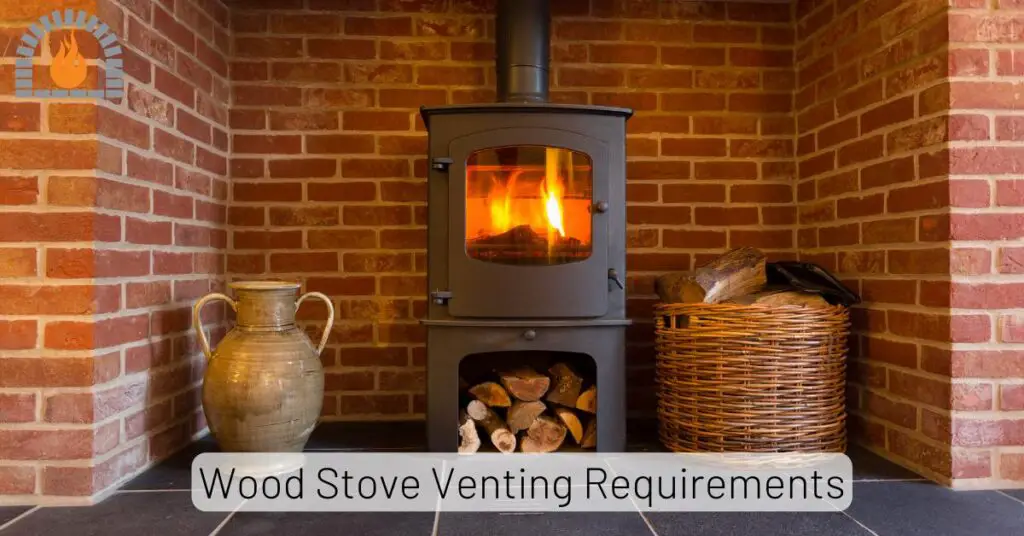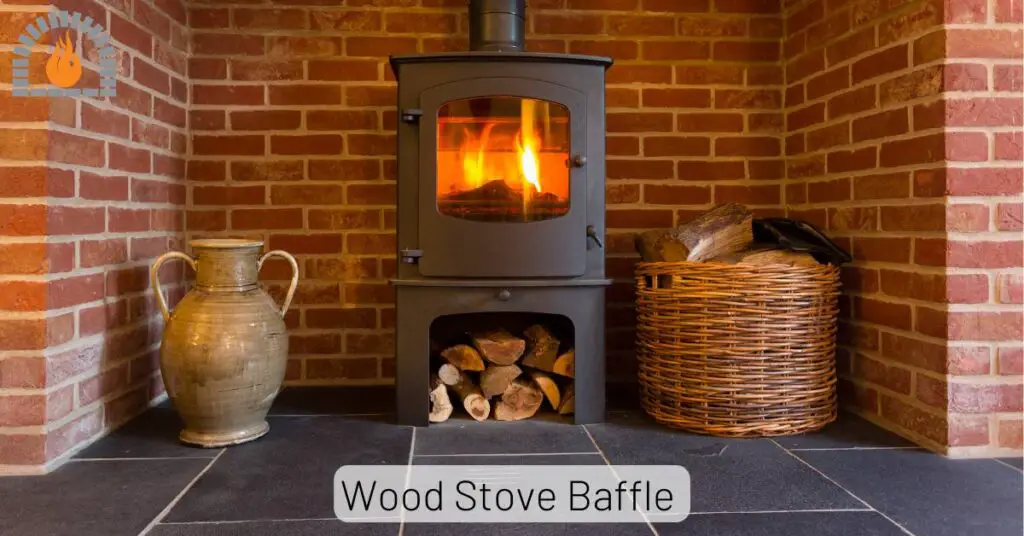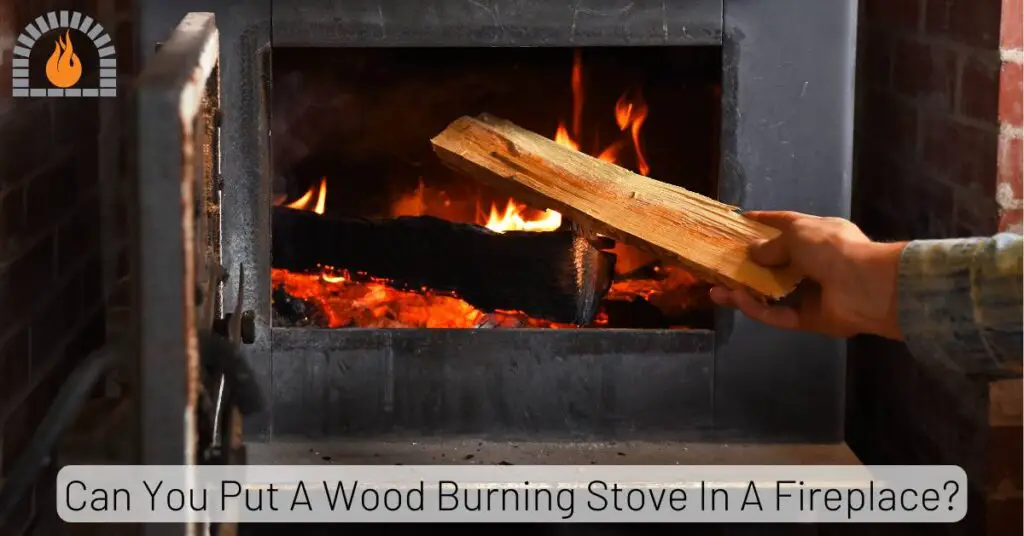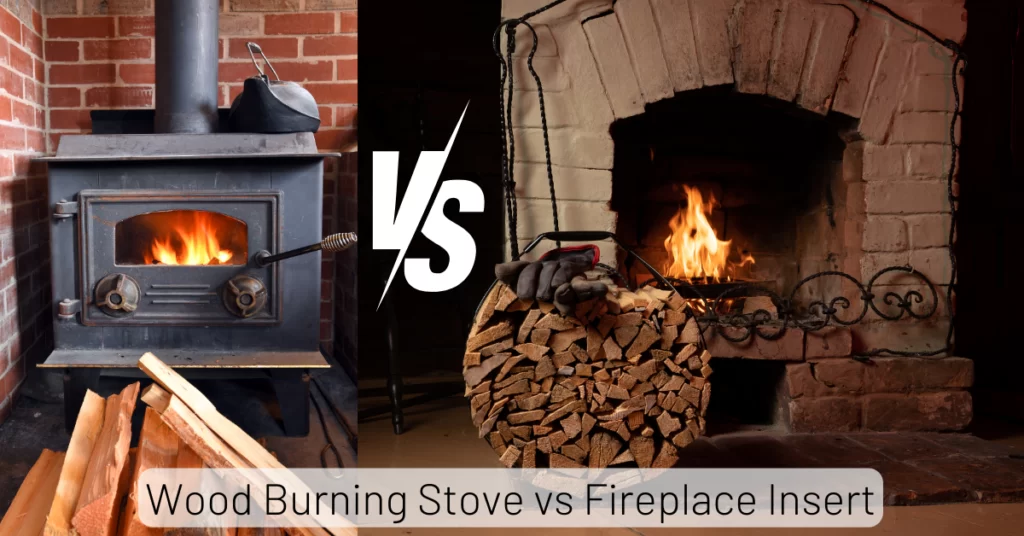When it comes to maximizing the efficiency and performance of your fireplace or wood stove, understanding the role of the baffle is crucial.
As someone who has spent countless hours fine-tuning my own heating systems, I can tell you firsthand how essential this seemingly simple component is.
The baffle plays a pivotal role in directing the flow of heat and gases, ensuring that your fireplace or stove operates at its best.
In this post, I’ll walk you through everything you need to know about fireplace and wood stove baffles, from their function and benefits to tips on maintenance and replacement.
Whether you’re a seasoned homeowner or a new fireplace enthusiast, you’ll find valuable insights that can help you get the most out of your heating system.
What is a Baffle Plate?
A baffle plate is a component located at the top of a fireplace or wood stove that serves to improve combustion efficiency. Its primary purpose is to keep heated air and waste gases inside the firebox longer, allowing for more complete combustion of the wood and enhancing heat output.
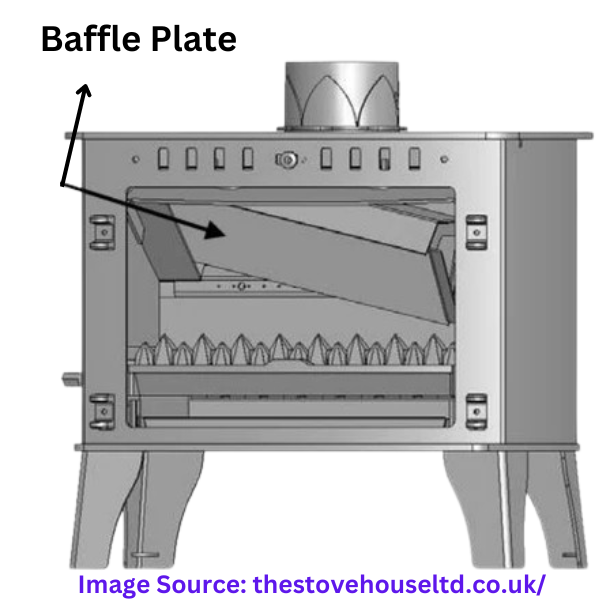
Function of Wood Stove Baffle
The modern wood stove baffle plays a crucial role in boosting the stove’s efficiency and overall performance. Sitting at the top of the firebox, it’s designed to control how air and hot gases move within the stove.
The baffle plate of fireplace and stoves helps keep heat inside longer, rather than letting it escape straight up the chimney.

How Baffles Work:
-
One of its main jobs is to slow down the flow of hot gases, forcing them to stay inside the firebox longer. This gives the stove more time to absorb the heat, which means your home stays warmer for longer without using extra fuel.
-
The fireplace baffle helps create the right airflow to mix oxygen and gases, allowing for what’s known as “secondary combustion.” This burns off any leftover particles that didn’t burn the first time, leading to more heat and fewer pollutants going up the chimney.
-
The wood burner baffle reflects heat back into the fire and burns gases more thoroughly, you get more warmth out of each piece of wood. That means you’ll burn less wood overall and still keep your space cozy.
-
Another benefit of wood stove baffle board is that it reduces creosote buildup in the chimney. Creosote is a flammable substance that can cause dangerous chimney fires if not managed.
Wood Stove Baffle Design
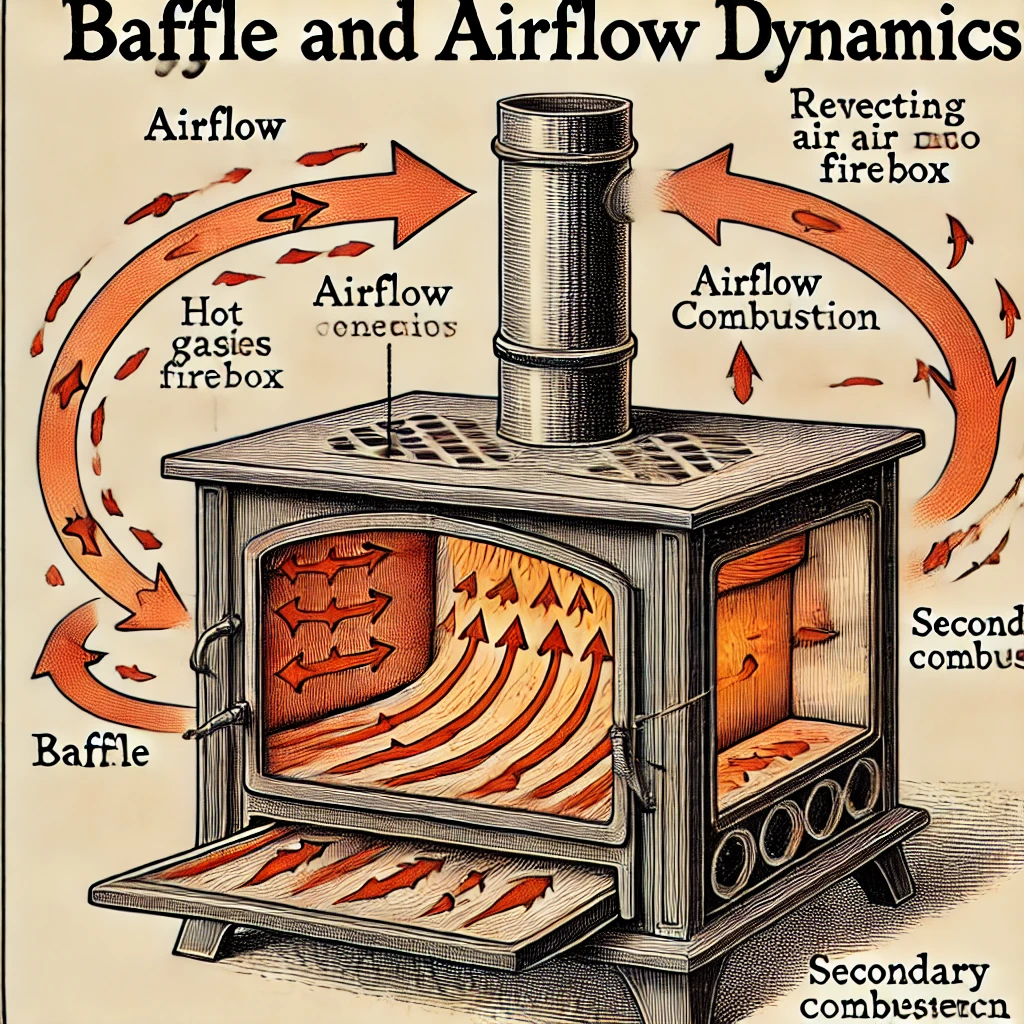
Common Materials Used for Baffles
Baffles are typically made from materials that can withstand high temperatures, such as:
-
Steel: Durable and commonly used in many wood stoves.
-
Ceramic: Often found in modern stoves, these baffles can withstand extreme heat and contribute to secondary combustion.
-
Vermiculite: A lightweight material that can be used as an alternative for baffles in some models.
ere’s a comparison table outlining key features of different modern baffle systems in wood-burning stoves:
| Feature | Steel Baffle | Ceramic Baffle | Vermiculite Baffle | Cast Iron Baffle |
|---|---|---|---|---|
| Material | Steel | Ceramic | Vermiculite | Cast Iron |
| Durability | High | Moderate | High | Very High |
| Heat Retention | Moderate | High | Very High | High |
| Weight | Heavy | Light | Light | Very Heavy |
| Cost | Affordable | Expensive | Moderate | Expensive |
| Installation | Simple | More challenging | Easy | Moderate |
| Resistance to Warping | Susceptible at high temps | Very Resistant | Highly Resistant | Resistant |
| Maintenance | Regular cleaning | Low maintenance | Low maintenance | Requires periodic cleaning |
| Common Usage | Older or budget stoves | High-efficiency stoves | Premium stoves | High-end stoves |

Signs of a Malfunctioning Baffle Plate.
Here are some signs of a malfunctioning baffle plate:
-
Visible Warping or Cracks
-
Increased Smoke Production
-
Reduced Heat Output
-
Soot or Creosote Buildup
-
Unusual Burning Patterns
FAQs
What is the primary function of a baffle?
The primary function is to improve combustion efficiency by retaining heat and waste gases.
How often should I replace my baffle?
This depends on usage, but regular inspections are recommended to determine its condition.
Can I install a baffle myself?
While some may choose to DIY, consulting a professional is advisable for safety and efficiency.
What are the signs of a failing baffle?
Look for warping, decreased heat output, and unusual noises.
Affiliate Disclosure: Fireplaceadviser.com is a participant in the Amazon Services LLC Associates Program. We may earn a commission when you click on certain links on this site and purchase.

Hello!! I am Jamal Khan. I often fix my home electric heaters and gas stove problems and research the common issues in the heating units to improve my knowledge and expertise. The aim of establishing fireplaceadviser.com is to share my expertise and knowledge with my audience.













